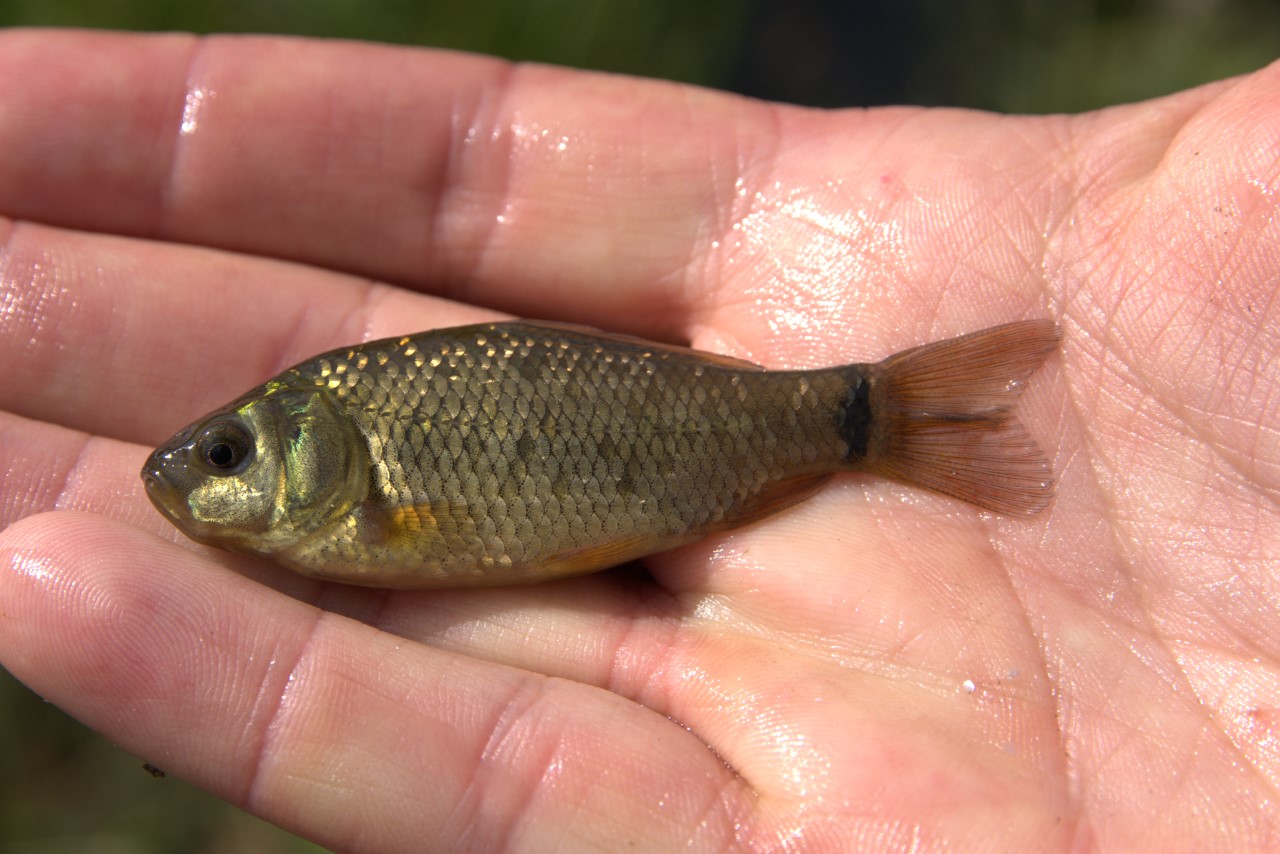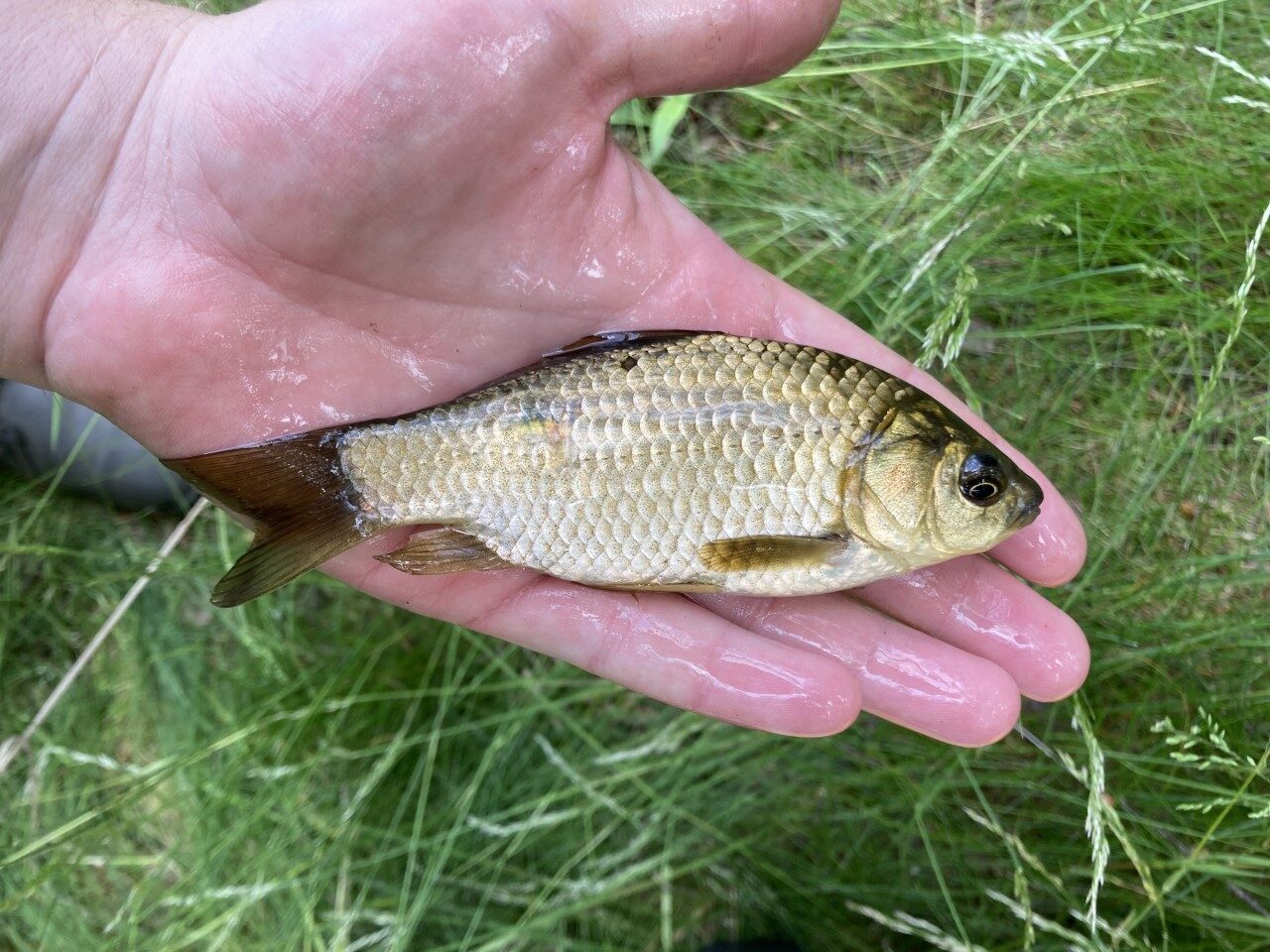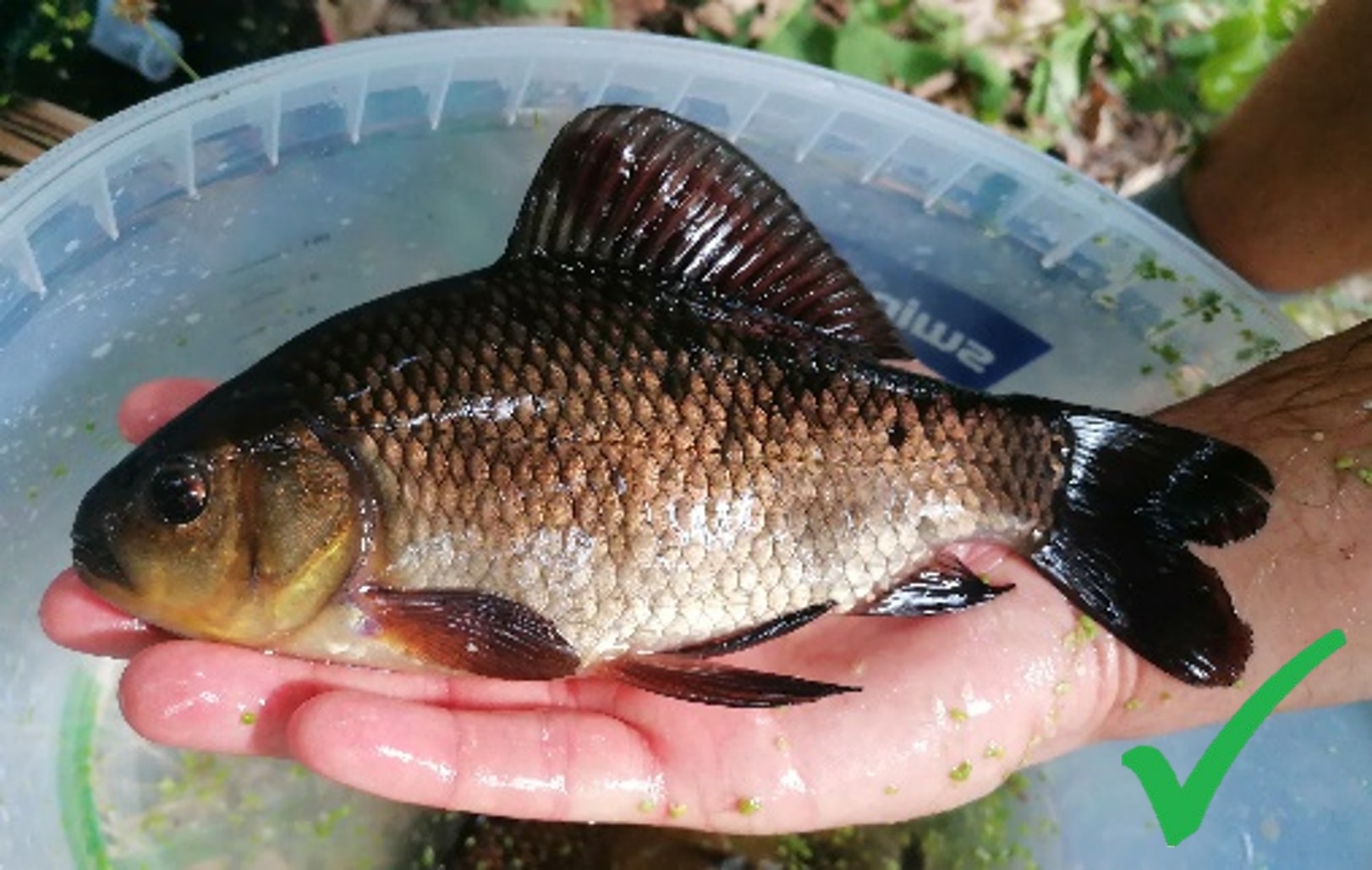How to distinguish our crucian carp from other fish species?
Basic characters
- Mouth without barbels (versus common carp)
- Dorsal fin significantly longer than the anal fin (compared to the Amur bitterling)
- Concave dorsal fin (gibel carp have it slightly bent inwards or straight; i.e. convex)
- Spot in the base of caudal fin (up to a body size of approx. 10 cm, the gibel carp have it only very rarely)


More detailed characters
- The caudal fin is shallowly curved (in gibel carp and goldfish it is distinctly curved)
- Toothing of the last hard ray of the unpaired fins
The dorsal margin of the crucian carp is serrated, the teeth in the dorsal fin are of the same size, usually 25 to 30 (gibel carp and goldfish have these teeth in varying numbers of 20 to 25, with the largest teeth being at the end of the ray - furthest from the body and having more pronounced dorsal and caudal fin rays).
Number of scales in the lateral line is usually 30-36 (compared to the gibel carp, which has 28-33)
However, there is a misconception that there is no overlap in this character.
Auxiliary features that distinguish it from the gibel carp. These features need to be looked at
- Golden green colour
- Smaller scales
- Head shape is rounded
- Mouth are small and point slightly upwards
- Eye position is higher
- Finer serration on the last hard ray of the dorsal fin
(You may notice the more pronounced serration in the gibel carp when keeping it in a pen. Due to the large sawtooth teeth on the dorsal fin, it happens that they get caught on the netting of the keep net or the netting of the hand net).

Other signs - fish has to be dead for identification
Number of gill rakers on the first gill arch
Crucian carp – 23-33
Gibel carp and goldfish – 38-57
Peritoneal colouration (lining of the abdominal cavity)
The crucian carp – whitish to silvery
Other Carassius – dark
Note: Individuals of the three species mentioned above (gibel carp, goldfish and ginbuna) are difficult to distinguish from each other and form a so-called species complex C. auratus, they can hybridize and all are widespread in the Czech Republic. For identification purposes (of this project), it is sufficient to distinguish between the crucian carp and one of these three non-native Carassius. Then just write the gibel carp.
Below you can see the subtle differences between the crucian carp and gibel carp. Even within a species there is a great variation in shape, so distinguishing between these species takes a bit of practice.
Species comparison: left - always the crucian carp, right - always the gibel carp

Identification is not always clear, so here are some examples of how to distinguish the crucian carp, gibel carp and common carp.
Examples

Crucian carp
- Mouth without barbels
- Concave dorsal fin
- Caudal fin slightly notched
- Spot at the base of caudal fin is not visible on this large individual

Gibel carp
- Mouth without barbels
- Dorsal fin curved inwards or straight
- Caudal fin distinctly curved

Common carp
- Mouth with barbels


